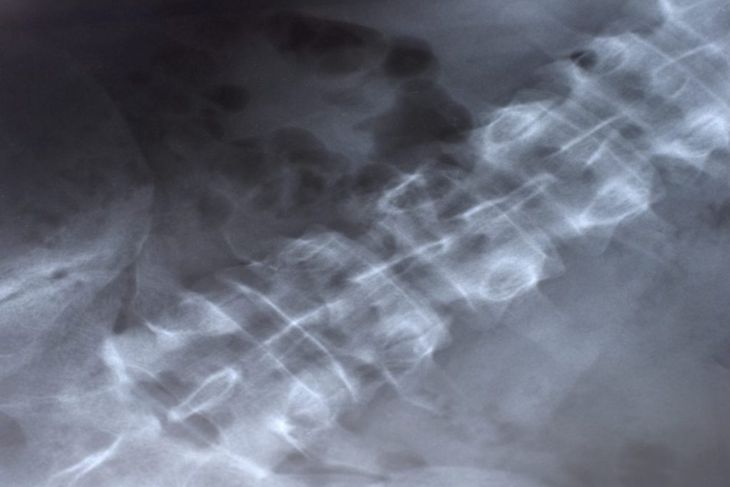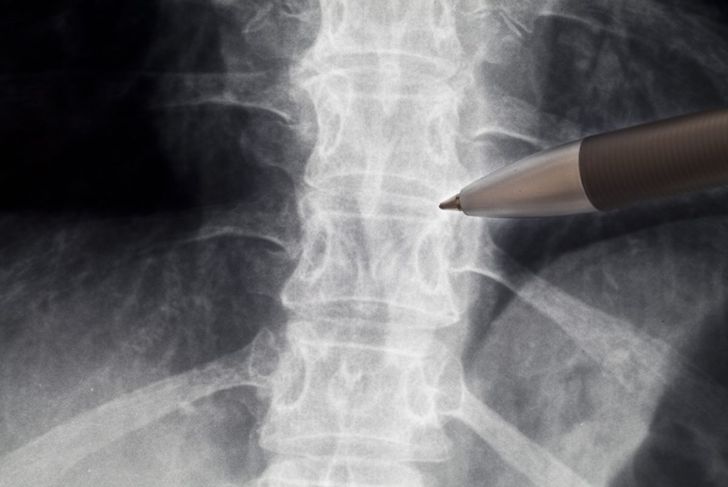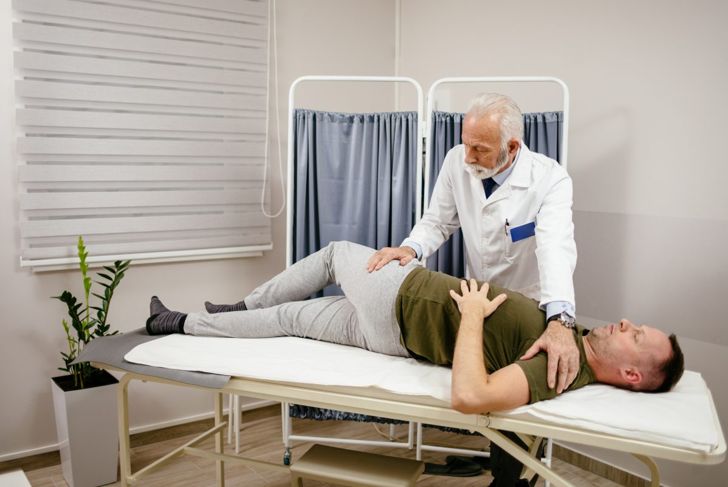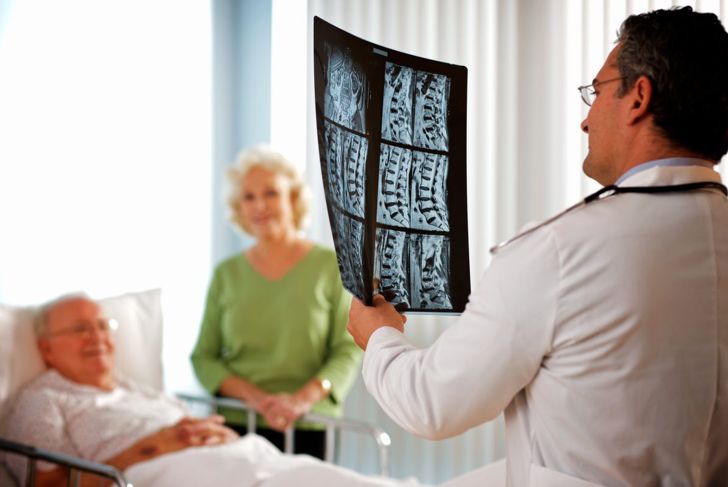Spondylolisthesis occurs when one of the bones in the spine slips out of place. It is not the same as a slipped disc, which affects the tissue between the vertebrae, as opposed to the bones themselves. Spondylolisthesis is most common in the lower back and has multiple causes and treatments.
Degenerative Spondylolisthesis
Degenerative spondylolisthesis is the most common type. The discs between the vertebrae become less spongy as we age and are unable to resist the movement of the spine as effectively. This makes it more likely that the discs will slip out of place. Degenerative spondylolisthesis is rare before age 50. Most cases are mild, and the progression of the displacement does not seem to correlate with the age of onset.
Isthmic Spondylolisthesis
Isthmic spondylolisthesis is caused by another common spine problem, spondylolysis. This similar-sounding condition occurs when stress fractures appear in the vertebrae at the small, thin portion that connects the facet joints — the part of the spine that allows for bending and twisting. These cracks weaken the bone, which can lead to it slipping out of place. The most common site is the fifth vertebra in the lumbar spine.
Congenital Spondylolisthesis
Congenital spondylolisthesis is present at birth. It is usually the result of the bones forming abnormally or a sudden injury, which increases the risk of slipping. Children with congenital spondylolisthesis are usually affected in the lower back, specifically between the fifth lumbar vertebra and the first bone in the sacrum. It is twice as common in females than males.
Other Types
There are other less common types of spondylolisthesis. Traumatic spondylolisthesis is caused by an injury to the spine. Pathological spondylolisthesis happens when another condition — like a tumor, infection, or osteoporosis — weakens the spine and the vertebrae slip out of place, and post-surgical spondylolisthesis occurs when the slippage gets worse after surgery.
Lumbar vs. Cervical
Degenerative lumbar spondylolisthesis is most common in the elderly, but spondylolisthesis can also occur in the cervical spine — the vertebrae of the neck, immediately below the skull. Trauma is the most common cause of cervical spondylolisthesis, though researchers have found cases in patients with renal failure or kidney disease. In the latter instances, spondylolisthesis occurs due to improper levels of phosphorus and calcium in the blood.
Symptoms
Symptoms of spondylolisthesis vary and range from mild to intense, depending on the severity of the disease. Some people have no symptoms, and children with the congenital form may not show any signs until they are in their late teens. Some people with spondylolisthesis may experience lordosis, an inward curvature of the lower back, or kyphosis when the upper spine curves forward. Other symptoms include lower back pain, stiffness, weakness in the legs, or pain, tingling, or numbness in the thighs and buttocks.
Diagnosis
The diagnosis of spondylolisthesis begins with a physical exam. The doctor assesses the spine, including asking the person to raise a leg straight out in from of them. If spondylolisthesis is present, this may be painful. Diagnostic testing is likely and includes an x-ray of the spine to determine if the vertebrae are out of place and a CT or MRI to assess the condition of the spinal canal.
Grading
Spondylolisthesis is graded according to severity. A radiologist examines x-rays of the spine and assigns a grade depending on how much the vertebrae have slipped. Grade I is a one to 25 percent slip; grade II, 26 to 50 percent; grade III 51 to 75 percent; and grade IV, 76 to 100 percent slip. Grades I and II are generally treated medically, while grades III and IV require surgery if pain is present.
Treatment and Management
In some cases, spondylolisthesis treatment is conservative. Doctors often recommend taking a break from sports and other strenuous activity until the pain resolves. Over-the-counter NSAIDs can treat pain and inflammation, but the doctor may prescribe stronger medications if needed. Steroid injections into the space around the spine may also help reduce pain and inflammation. However, there is a risk of damaging the membrane that surrounds the spinal cord. Physical therapy is also an important part of treatment. Exercises that strengthen the back and abdomen can minimize the movement of the spine, reducing pain. Most people require between eight and 12 weeks of physical therapy.
Surgery
Severe cases of spondylolisthesis, require surgery. A spinal fusion welds together the affected vertebrae, creating a single, solid bone. This prevents the individual vertebrae from moving, which eliminates pain but also reduces spinal flexibility. If the spinal nerve is compressed, the surgery is a little more complicated, and the surgeon must first open up the spinal canal to relieve the pressure on the nerves.

 Home
Home Health
Health Diet & Nutrition
Diet & Nutrition Living Well
Living Well More
More




















